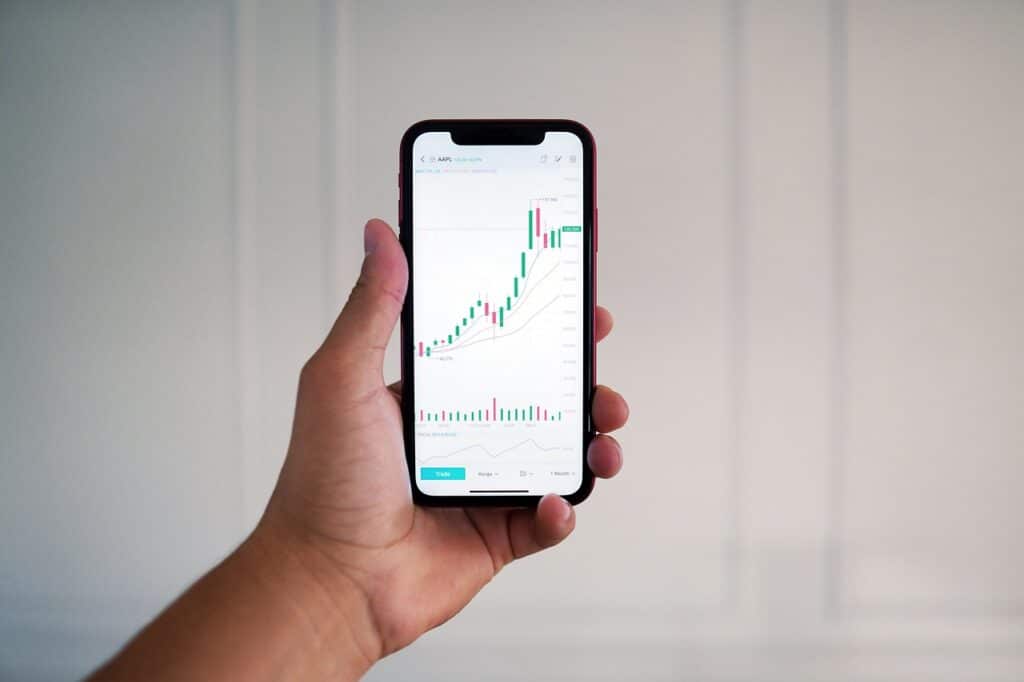In the intricate landscape of intellectual property, the role of patent pools in valuation is a dynamic and often transformative force. This comprehensive exploration unravels the nuanced layers of this relationship, delving into the intricacies that define how patent pools influence the valuation of individual patents and the broader intellectual property landscape. From the foundational principles to real-world applications, each section of this article provides an in-depth journey through the symbiotic dance between patent pools and valuation.
Understanding Patent Pools
At the heart of comprehending the intricate role of patent pools in the valuation landscape lies a nuanced understanding of their foundational concepts. This foundational exploration starts by unraveling the fundamental principles that serve as the bedrock for patent pools. One key element is the collaborative nature of patent aggregation, where multiple patent holders voluntarily join forces to create a pool of patents. This collaborative effort aims to streamline licensing processes, reduce transaction costs, and enhance overall efficiency in managing intellectual property portfolios. Stakeholders are led through the intricacies of how this collaborative spirit fosters an environment conducive to innovation and collective advancement in the technological landscape.

Another vital aspect is the mechanisms of cross-licensing agreements within patent pools. This involves the reciprocal granting of licenses among patent pool members, allowing each participant to access and utilize the technologies owned by others in the pool. This cross-licensing framework not only promotes a sense of shared benefit but also ensures that each member gains value from the entire pool. Stakeholders gain insights into the dynamics of how cross-licensing agreements foster a cooperative ecosystem, encouraging knowledge exchange and collaborative development. A clear comprehension of these foundational concepts becomes the cornerstone for stakeholders, providing the essential understanding needed to navigate the subsequent sections that delve into the symbiotic relationship between patent pools and valuation.
Legal and Regulatory Landscape
Navigating the terrain of patent pools demands a comprehensive understanding of the legal and regulatory landscape that governs these collaborative entities. This exploration begins by delving into the intricate web of laws and regulations that shape the formation and operation of patent pools. Antitrust laws play a pivotal role in ensuring that the collaborative efforts within patent pools do not lead to anti-competitive practices. Stakeholders are guided through the complexities of antitrust laws, understanding how these regulations strike a delicate balance between encouraging collaboration for innovation and preventing monopolistic behavior.
Intellectual property regulations also come into sharp focus, defining the scope and nature of patents within a pool. This includes considerations such as the types of patents eligible for inclusion, the terms of licensing agreements, and the conditions for participation. Additionally, competition policies further shape the functioning of patent pools, ensuring that fair competition prevails within the industry. Stakeholders gain insights into how these legal and regulatory frameworks impact the strategic decisions and operational dynamics of patent pools.
By examining instances where patent pools have successfully navigated these frameworks, stakeholders gain practical insights into the challenges and opportunities presented by the legal landscape. This section sets the stage for a comprehensive understanding of the role of patent pools in the valuation process by illuminating the legal intricacies that shape their formation and influence their operations.
The Valuation Dynamics
Collective Valuation Impact
The influence of patent pools on the valuation of individual patents unfolds as a multifaceted and dynamic interplay. This section delves deeper into the collective valuation impact wielded by patent pools, providing stakeholders with a comprehensive understanding of the mechanisms at play. One key facet is the aggregation of complementary technologies within a patent pool. By bringing together patents that complement each other, the pool creates a synergistic effect that enhances the overall value of the patents within it. Stakeholders are guided through real-world examples that showcase how the collaborative environment fosters innovation and the development of more robust and comprehensive technologies.
Furthermore, the collaborative nature of patent pools not only aggregates technologies but also fosters an environment where participants share expertise, insights, and resources. This collaborative exchange can lead to advancements and improvements in the technologies within the pool, further enhancing their overall value. Stakeholders gain insights into how this collaborative approach creates a positive feedback loop, influencing the perceived worth of individual patents within the pool. This nuanced understanding of the collective valuation impact provides stakeholders with the tools needed to strategically position their patents within collaborative environments, maximizing their overall value.
Enhanced Licensing Opportunities
Patent pools act as catalysts for enhanced licensing opportunities, significantly impacting the valuation of the patents involved. This subsection delves into the collaborative nature of patent pools and how it streamlines licensing processes, offering stakeholders insights into the broader market access facilitated by these collaborative entities. The reduction of transaction costs is a key element; by pooling patents together, participants can collectively negotiate licenses, reducing the complexities and costs associated with individual negotiations. Stakeholders gain a nuanced understanding of how this streamlined licensing process enhances the attractiveness of patents within the pool, making them more appealing to potential licensees.
The collaborative nature of patent pools not only simplifies licensing negotiations but also broadens the reach of patented technologies. This is particularly evident in industries where interoperability and standardization are crucial. By participating in a patent pool, stakeholders open avenues for their technologies to be adopted more widely across different products and services.

Technology Standards and Patent Pools
In the complex realm of technology standards, the interplay between standards development and patent pools emerges as a critical factor in the valuation landscape. This section guides stakeholders through the intricacies of how patents essential to a particular technology standard often find their place within patent pools. By examining this dynamic relationship, stakeholders gain profound insights into the strategic importance of adhering to standards for patents within a pool. The alignment with technology standards can significantly elevate the value of patents, ensuring their relevance and indispensability in industries heavily reliant on these established norms.
The adherence to technology standards becomes a strategic driver in the valuation of patents within pools due to the increased market reach and acceptance that comes with being aligned with widely recognized standards. Stakeholders are immersed in real-world examples that illustrate the practical applications of this dynamic. These examples showcase instances where patents within pools, aligned with crucial technology standards, have become industry benchmarks. Through this exploration, stakeholders gain a nuanced understanding of how the intersection of standards development and patent pools not only influences the valuation of individual patents but also shapes the broader landscape of innovation within specific industries.
Industry-Specific Considerations
Patent pools, as collaborative entities, operate within diverse industries, each characterized by its unique considerations and dynamics. This subsection delves into the industry-specific nuances that exert influence on the role of patent pools in the valuation process. From pharmaceuticals to telecommunications, stakeholders are guided through the distinct challenges and opportunities presented by different sectors. The adaptability and impact of patent pools are illuminated through a series of case studies that showcase how industry-specific considerations shape the valuation of patents within collaborative frameworks.
In the pharmaceutical industry, for instance, where drug development is often characterized by intricate patent landscapes, patent pools can play a pivotal role in harmonizing licensing processes and ensuring broader access to essential medications. On the other hand, in the telecommunications sector, patent pools may address the challenges posed by interoperability and standardization, fostering collaborative innovation. Through these case studies, stakeholders gain practical insights into how the industry-specific landscape influences the valuation of patents within pools. This exploration equips stakeholders with a nuanced understanding of the adaptability of patent pools across various domains, highlighting their impact on innovation and valuation within the intricacies of each industry.
Challenges and Considerations
Antitrust Concerns
The collaborative nature of patent pools brings forth legitimate antitrust concerns that warrant meticulous consideration. This section delves into the potential challenges posed by antitrust regulations and outlines strategies to effectively navigate these concerns. Stakeholders are guided through the intricate landscape of antitrust laws, understanding how collaborative efforts within patent pools must strike a delicate balance. While the primary goal of patent pools is to foster innovation through cooperation, the risk of inadvertently creating anti-competitive environments looms large. Real-world examples serve as instructive case studies, providing stakeholders with a tangible understanding of how antitrust concerns can impact the valuation dynamics within patent pools.
These examples shed light on instances where antitrust challenges have influenced the operations and outcomes of patent pools. By examining both successes and pitfalls, stakeholders gain insights into the nuances of navigating antitrust regulations within collaborative frameworks. This exploration equips them with the knowledge needed to design and operate patent pools that not only promote innovation but also adhere to antitrust principles, ensuring fair competition and compliance with regulatory standards. It becomes clear that a proactive and informed approach to antitrust concerns is crucial for the sustainable success of patent pools and the accurate valuation of patents within these collaborative structures.
Incentives for Participation
The success of a patent pool is intricately tied to the active participation of patent holders, and understanding the incentives that drive this participation is essential for both the success of the pool and the accurate valuation of its patents. This subsection explores the multifaceted incentives that make participation in patent pools attractive to patent holders. Revenue-sharing mechanisms, for instance, play a crucial role, providing participants with a share of the licensing revenue generated by the pool. Stakeholders gain insights into how these financial incentives contribute to the valuation process by making participation economically rewarding.
Access to complementary technologies is another powerful incentive explored in this section. By participating in a patent pool, holders gain access to a broader array of technologies, creating a symbiotic relationship that enhances the overall value of their patents. Real-world case studies serve as illustrative examples, showcasing instances where robust incentives have driven active participation, leading to the flourishing of patent pools. These success stories highlight the direct impact of incentives on the valuation of patents within collaborative frameworks. Through this exploration, stakeholders gain a nuanced understanding of the diverse factors that drive participation and contribute to the overall success and valuation of patents within patent pools.
Future Trends and Innovations
Evolving Collaborative Models
The landscape of patent pools is not static; it evolves in response to technological advancements and changing market dynamics. This section explores emerging collaborative models that are shaping the future of patent pools. From open-innovation platforms to sector-specific consortiums, stakeholders are guided through the innovative approaches that promise to redefine the collaborative landscape. By understanding these evolving models, stakeholders can anticipate how future collaborative structures may impact the valuation of patents within the intellectual property ecosystem.
Technology Transfer and Global Collaboration
As technology transfer and global collaboration become increasingly prominent, this subsection examines their potential impact on the role of patent pools in valuation. Stakeholders gain insights into how cross-border collaborations and technology transfer initiatives can reshape the dynamics of patent pools. Real-world examples showcase instances where global collaboration has influenced the valuation of patents within pools, emphasizing the importance of staying attuned to these trends for informed decision-making in the ever-evolving landscape of intellectual property.

Conclusion
In conclusion, the interplay between patent pools and valuation is a dynamic and multifaceted relationship that extends beyond the traditional realms of intellectual property assessment. This article has traversed the intricate landscape, from understanding the foundational concepts and legal dimensions of patent pools to exploring their collective valuation impact and real-world applications. By navigating through the challenges, considerations, and future trends, stakeholders are equipped with a comprehensive understanding of the role of patent pools in the valuation process. As the intellectual property landscape continues to evolve, the symbiotic dance between patent pools and valuation promises to be a pivotal force shaping the future of innovation and collaboration.

